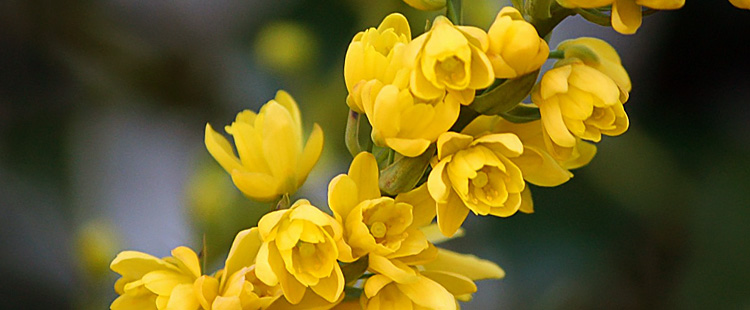| Plant Classification | |
| Order: | Ranunculales |
| Family: | Berberidaceae |
| Genus: | Mahonia |
| Species: | Mahonia nervosa |
The Chemistry Behind the Color
Mahonia’s yellow flowers are but a tease of the pleasantries that lie beneath the surface. M. nervosa contains an isoquinoline alkaloid called Berberine, a secondary metabolite of high value to the plant and humans alike. Berberine acts as an antibacterial. The substance is bright yellow and is stored in the cortex, pith and epidermis of the rhizome and stalk, though also prevalent in the leaves, flowers and fruit of this plant and many of its relatives. For M. nervosa this alkaloid may serve as a nitrogen transport substance or storage compound. But, more importantly it acts as a strong antibacterial, antifungal, antiviral compound that helps to defend the plant from harmful microorganisms (Internet. Michael Wink).

The Berberine compound.
Historical Significance and Medical Benefit
This plant portrays a wide variety of benefits for the Human race past to present. The antibacterial characteristics that are of high value to the plant are also of high value to use people. It was used by the Saanich People of Vancouver Island as the only known cure for shellfish poisoning because of this trait (Pojar and Mackinnon 1994). And for a culture whose diet largely depended on the fruits of the sea as a major staple of animal proteins, you would bet that the Oregon Grape remedy was a reliable one. To prepare this medicine, one would simply scrap the root and stem bark down to the wood (adding flowers or berries if available). Then boil these plant parts for a few minutes or until the color of the solution changes to a concentrated yellow and consume.The same preparation will work efficiently as a cure for Giardia as well. Giardia is an infection contracted from contaminated water sources.Mind you that this process sacrifices an entire plant and because of the potency of the drug it is best that you only seek it when in legitimate need!
Other medicinal uses include treatment of gall bladder complications (inflammation, gall stones), toning of the digestive tract, and detoxification of the liver (David Hoffman 1983 and 1990, “The New Holistic Herbal”).

Photo by H. Zell
Edibility and Utilitarian Use
The bright yellow color, present in the root and stem bark and flowers, also found its way into use as a vibrant dye for basketry materials. And depending on the extraction methods you can produce a brown and reddish pigment as well. The berries are still eaten as well as used in wines and jellies. To me they are the lemon of the cascades, one of my favorites.
Now that you are familiar with its chemical properties go out and detoxify your liver, dye your baskets, and prepare your wild jellies. Be able to identify Oregon Grape. And more importantly, befriend Mahonia n. because you never know when its yellow secrets will be to your fancy.
References
- David Hoffman 1983 and 1990, “The New Holistic Herbal”
- Anthony O. Mitchell Jr. 2013, Available from: https://www.poetrysoup.com/poem/a_spring_kiss_2k13_469340
- Pojar and Mackinnon 1994, “The Plants of the Pacific Northwest”
- Michael Wink. 2014. Available from: http://www.uni-heidilberg.de/institute/fak14/ipmb/phazb/pdf-files/1986-1987%20Pdf.Pubwink/6.%201987.pdf

